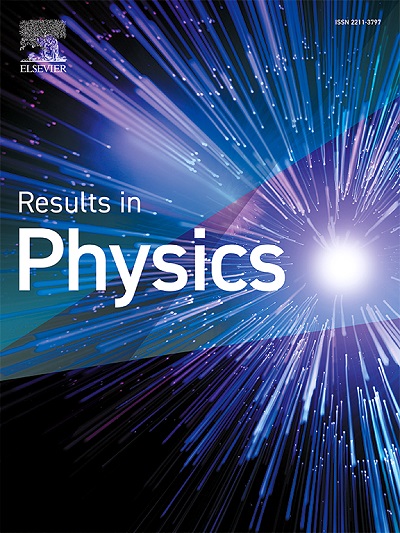On the bosonic origin of the elastic constants of the solids
IF 4.4
2区 物理与天体物理
Q2 MATERIALS SCIENCE, MULTIDISCIPLINARY
引用次数: 0
Abstract
It is shown that the elastic compliances, sij, are defined, as the elastic stiffness constants, cij, by bosons. The constants cij are well-known to be given by the velocities of the sound waves, called here Debye-bosons. Sound waves are evidently elastic dipole radiation. The constants sij will be shown to originate in a boson type that is identified as elastic quadrupole radiation. Consistent with the conclusion that the two elastic constants are defined by bosons is that they reach a (finite) maximum at the ordering temperature of the respective boson field. The maximum of the elastic compliances sij at Tm indicates, that the associated bosons order at the melting point, Tm. We will call these bosons, MP-bosons. The maximum of the constants cij is at T = 0. As a consequence, the Debye boson field does not order at a finite temperature. Upon ordering, all MP-bosons condense in one energy state (Bose-Einstein condensation). This is the thermodynamically highest possible order. Additionally, ordered boson fields constrict themselves to the finite volume of a stationary unit. In magnetism, these ordered units are known as domains. The mosaic blocks are identified as the long-range ordered units, created upon ordering of the MP-bosons. Moreover, ordered boson fields attempt to assume the smallest possible volume (magnetostriction). The self-constriction of the ordered MP-boson field that compresses each mosaic block, has to be made responsible for the strong decrease of the lattice parameter below Tm and for the cohesion of the solids up to Tm.
固体弹性常数的玻色子起源
结果表明,弹性柔度可由玻色子定义为弹性刚度常数cij。众所周知,常数cij是由声波的速度给出的,这里称之为德拜玻色子。声波明显是弹性偶极子辐射。常数sij将被证明起源于一种被确定为弹性四极辐射的玻色子类型。与这两个弹性常数由玻色子定义的结论一致的是,它们在各自玻色子场的有序温度处达到(有限)最大值。弹性柔度在Tm处的最大值表明,相关玻色子在熔点Tm处有序。我们称这些玻色子为mp -玻色子。常数cij的最大值在T = 0处。因此,德拜玻色子场在有限温度下是无序的。在排序后,所有的mp -玻色子凝聚在一个能态(玻色-爱因斯坦凝聚)。这是热力学上可能的最高阶。此外,有序玻色子场将自身压缩为固定单元的有限体积。在磁学中,这些有序的单位被称为域。马赛克块被识别为远程有序单元,在mp -玻色子的有序基础上创建。此外,有序玻色子场试图假定尽可能小的体积(磁致伸缩)。压缩每个镶嵌块的有序mp -玻色子场的自收缩,必须对晶格参数在Tm以下的强烈下降和固体在Tm以下的内聚负责。
本文章由计算机程序翻译,如有差异,请以英文原文为准。
求助全文
约1分钟内获得全文
求助全文
来源期刊

Results in Physics
MATERIALS SCIENCE, MULTIDISCIPLINARYPHYSIC-PHYSICS, MULTIDISCIPLINARY
CiteScore
8.70
自引率
9.40%
发文量
754
审稿时长
50 days
期刊介绍:
Results in Physics is an open access journal offering authors the opportunity to publish in all fundamental and interdisciplinary areas of physics, materials science, and applied physics. Papers of a theoretical, computational, and experimental nature are all welcome. Results in Physics accepts papers that are scientifically sound, technically correct and provide valuable new knowledge to the physics community. Topics such as three-dimensional flow and magnetohydrodynamics are not within the scope of Results in Physics.
Results in Physics welcomes three types of papers:
1. Full research papers
2. Microarticles: very short papers, no longer than two pages. They may consist of a single, but well-described piece of information, such as:
- Data and/or a plot plus a description
- Description of a new method or instrumentation
- Negative results
- Concept or design study
3. Letters to the Editor: Letters discussing a recent article published in Results in Physics are welcome. These are objective, constructive, or educational critiques of papers published in Results in Physics. Accepted letters will be sent to the author of the original paper for a response. Each letter and response is published together. Letters should be received within 8 weeks of the article''s publication. They should not exceed 750 words of text and 10 references.
 求助内容:
求助内容: 应助结果提醒方式:
应助结果提醒方式:


